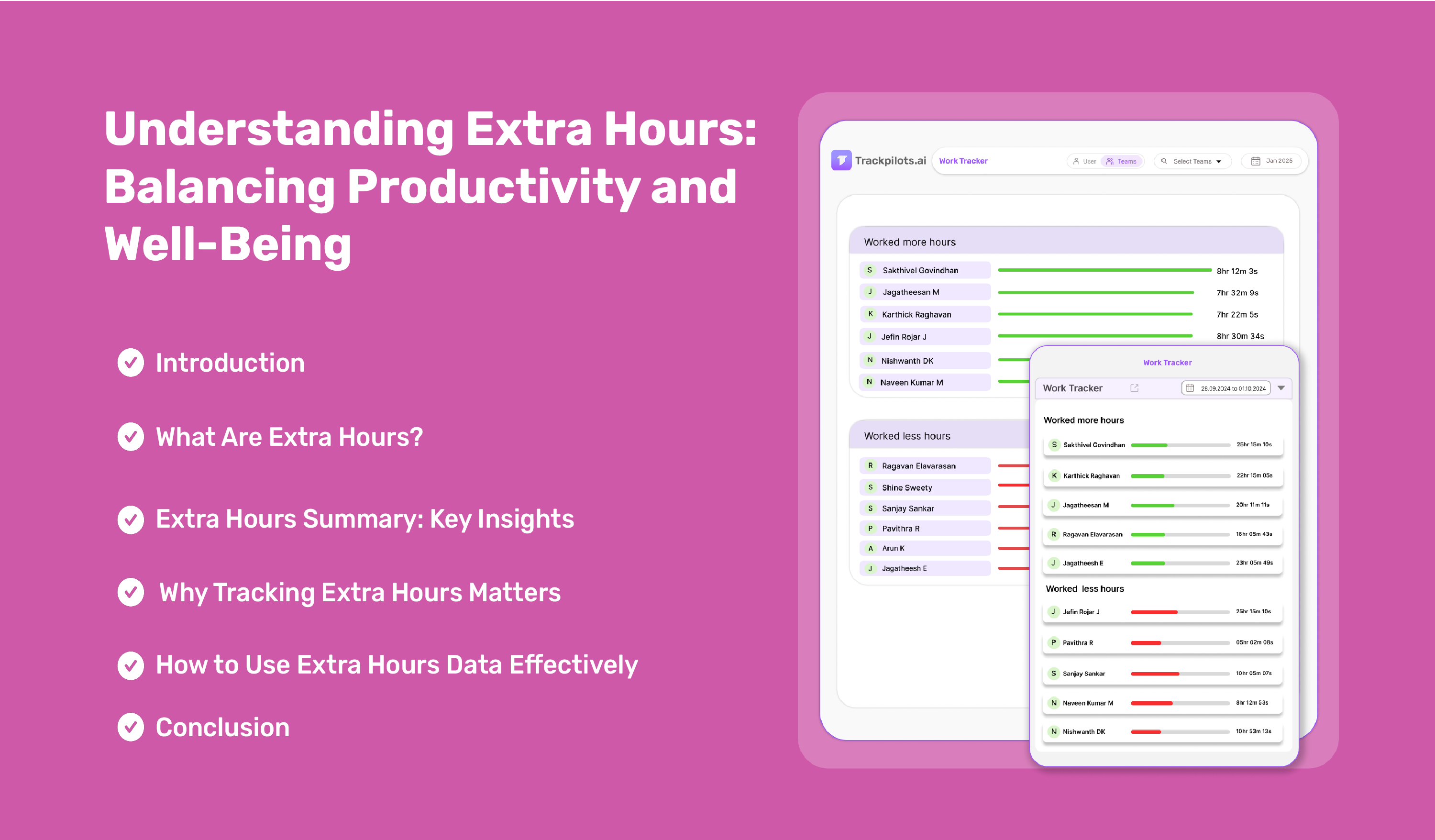REPORT ANALYSIS
Understanding Extra Hours: Balancing Productivity and Well-Being
In today’s work environment, tracking employee productivity goes beyond just monitoring attendance. One key aspect that organizations often focus on is extra hours worked by employees. These are the hours logged beyond the standard work schedule, which can provide insights into employee dedication, workload distribution, and potential burnout risks

Introduction
By leveraging tools that track Extra Hours Summary, businesses can better understand how their teams are managing their time and ensure a healthy balance between productivity and well-being.
What Are Extra Hours?
Extra hours are calculated when employees continue working beyond their fixed work schedule. For example, if the standard workday ends at 6:00 PM and an employee logs out at 7:30 PM, the additional 1.5 hours are considered extra hours. These hours are automatically tracked by monitoring tools, providing a clear picture of who is going above and beyond their regular duties.
Extra Hours Summary: Key Insights
The Extra Hours Summary report offers a detailed breakdown of overtime work, including:
Employee Name: Identify who is putting in extra hours.
Total Extra Hours: Track the cumulative overtime worked by each employee.
For instance, the report might show:
John Doe: Total Extra Hours – 10 hours.
Ram Kumar: Total Extra Hours – 7 hours.
This data helps managers recognize employees who are consistently working beyond their scheduled hours, allowing them to address potential issues such as overwork or inefficiencies in task distribution.
Why Tracking Extra Hours Matters
While extra hours can indicate dedication, they can also signal underlying problems. Here’s why monitoring this metric is important:
Recognizing Effort: Employees who consistently put in extra hours often go the extra mile to meet deadlines or complete tasks. Acknowledging their efforts can boost morale and motivation.
Preventing Burnout: Excessive overtime can lead to employee burnout, affecting both productivity and mental health. By identifying patterns of extra hours, managers can intervene early and redistribute workloads if necessary.
Improving Workflow Efficiency: If certain employees are consistently working extra hours, it may indicate inefficiencies in processes or resource allocation. Addressing these issues can lead to a more balanced and productive team.
Ensuring Fair Compensation: For organizations that compensate overtime, tracking extra hours ensures that employees are fairly paid for their additional efforts.
How to Use Extra Hours Data Effectively
To make the most of the Extra Hours Summary, managers can:
Analyze Trends: Look for patterns in overtime work. Are certain employees consistently working extra hours? Is there a particular time of the month or project phase when overtime spikes?
Engage in Conversations: Talk to employees who frequently work extra hours. Understand their workload, challenges, and whether they need additional support.
Optimize Workflows: Use the data to identify bottlenecks or inefficiencies in processes. Streamlining workflows can reduce the need for overtime.
Promote Work-Life Balance: Encourage employees to maintain a healthy balance between work and personal life. This not only improves well-being but also enhances long-term productivity.
Conclusion
Tracking extra hours is more than just a metric—it’s a window into how employees are managing their workloads and time. By leveraging tools that provide an Extra Hours Summary, organizations can recognize dedication, prevent burnout, and optimize workflows. This approach not only fosters a healthier work environment but also ensures that teams remain productive and motivated. Balancing productivity with well-being is key to building a sustainable and successful workplace.

